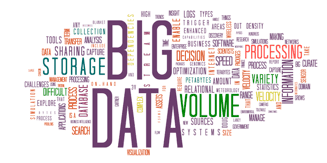These trends will shape mobile marketing next year
Mobile marketing strategies span across several industries. Due to rapid changes in mobile technology and marketing approaches, marketers have to be on their toes to adapt the new trends that come their way and integrate the same in their promotional strategies.
What are some of the top trends that we can expect in the coming year? What new hardware will make headlines? Which technology is going to gain more prominence?
Based on the results of a recent marketing trends poll conducted by Smartinsights (which asked users to share their views on marketing techniques that will have maximum commercial impact in 2016), here is a list of five of the top marketing trends as they relate to mobile marketing. They're in the order they were voted on by Smart Insights readers.
1. Marketing Automation

Source
According to a report by Venture Beat, as many as 56% of companies use an email marketing provider. It's surprising it's not more, but those who already use email marketing are 75% or more likely to purchase marketing automation software over the next year. This means Marketing Automation is slated to grow exponentially in the coming year, irrespective of the business it caters to.
There are also many significant changes, which include but are not limited to -
- A set of highly evolved marketing automation software - the ones that are easy to use and reduces time, efforts and resources for digital marketers.
- Marketing automation software are going to be more mobile-friendly than ever. This will allow marketers to carry out their marketing campaigns on mobile devices flawlessly. Many Marketing Automation suppliers have a desktop legacy - so do check their mobile capabilities carefully.
- In future, the platforms and tools will become more personalized, especially when it comes to predictive analytics. It will be easier for marketers to determine their most valuable customers, their purchasing and spending habits as well as their browsing habits.
2. Content Marketing – The Rise of 360° Video

Source
Content marketing is another trend, which is going to make new waves in the mobile marketing industry. One of the major highlight of content marketing in 2016 and beyond is that it is going to be more interactive and engaging for the target audience. And one of the best examples of interactive technology that can become the mainstay of content marketing in 2016 is - 360° Video.
A VR (Virtual Reality) technology, 360° Video allows viewers to pan around the video in a complete circle. In simple words, users can select the angle from which they want to view any video that has been shot with special cameras. For them, it is almost like being there in the video in-person. No prize for guessing that 360° Video has a lot of potential, which is being explored by tech-giants Google (YouTube) and Facebook (Newsfeed videos).
Marketers who specialize in content marketing, can see 360-degree video as the ‘new form of content’ and use it to grab the attention of their consumers. With the scope of being more interactive in the future, these videos can be used by consumers to explore in-depth information about various products and service on their mobiles.
Think of the endless opportunities this form of content can create for various businesses:
- Online shopping will get a complete facelift with 36o-Degree video and especially Live Video Streaming, this will give them a real-time perspective about the products they are going to buy.
- 360-Degree video ads will create a more immersive and engaging environment and provide a richer user-experience. This will help marketers make more impact on their target audience than advertisements on other channels.
- Customers will have a complete control over what they want to view in the video and from what angle. This means they can re-watch the entire content again, each time from a different angle and never miss a single thing!
- Since these videos are deep-rooted in Virtual Reality, they will retain viewers’ attention more than any other form of content.
With a number of hardware being created to accommodate 360-Degree video content, marketers should go all out in creating and promoting unique videos for their target audience and capture their attention.
3. Big Data

Source
Big Data is getting more popular with each passing day as a large number of mobile users routinely use their devices to interact with brands or businesses. The rise of cloud computing is also one of the precursors for this phenomenon.
Many leading companies understand the need for Big Data and use it to understand their customers, gain an insight about their competitors and analyze the results to implement a comprehensive plan, which can help them enhance their business strategies.
Marketers therefore, need to curate and organize this massive volume of data to suit their requirements and implement the results to gain a competitive edge.
Say for example, they can use it to measure the time spent on the app/webpage, referral traffic, bounce pages and even conversions. Similarly, they can also use Big Data from social media channels to study customer preferences and trends, their behavior and use it to create more relevant product/service offers on the same channels.
For instance, when a customer checks in a luxury suite, he will no longer need to call for room service to ask for the wine of his choice. Using Big Data analysis, the hotel will know his preferences in wine, maybe from the recent purchases made by him and deliver the same to his room. They can also use the data to create customized menu for him and book a cab of his choice as and when he requires the service. All these are real-time benefits provided to the customer, possible only through Big Data analysis.
In a nutshell, Big Data will help marketers understand their buyers’ moves and this is what will help them maximize their ROI.
4. Mobile Marketing - Location Based Marketing and Mobile Payments will Take Precedence

Source
Location-based mobile marketing strategies are going to get more traction in the coming years.
The first example that comes to mind when we think of location based services is that of Apple iBeacon. These are tiny transmitters that use BLE (Bluetooth Low Energy) technology that can easily and quickly detect nearby devices in various locations (retail outlets, shopping malls, point of sale displays etc.).
This technology can definitely take mobile marketing to the next level. It will help marketers create an interactive experience for their customers by offering real-time, customized alerts about discounts and deals, which in turn will help them earn loyal customers.
Suppose a customer is in the vicinity of a café. Upon detecting his presence, the beacon in the café will immediately relay the ‘deal of the day’ – which is a limited offer. This bit of information will pop up on his screen and he will be able to avail the deal instantly with just a tap on the screen. At the time of payment, he can redeem the deal and get a discount on the total billing amount. And that is not all, when he makes the payment, he will instantly get another deal popping up on the screen.
Sounds interesting isn’t it?
This trend will help marketers create loyal customers the first and foremost and provide them more personalized services in the future. Even mobile payments, will become mainstream and integrated with mobile marketing.
Mobile Payments

Source
About 80% of Apple Watch users are using Apple Pay to make payments. Looking at this high adoption rate in a small period of time, it is safe to say that mobile payments do have a great potential in the future.
For instance, content-sharing website Pinterest announced ‘buyable pins’ in its app version. This feature will allow users to directly buy anything of their choice by tapping the ‘buy it’ button and get the option to make payments using Apple Pay.
Sensing the success of its virtual payment system, Apple went ahead and integrated its Passbook with Apple Pay. Known as Wallet it lets users store all their credit and debit cards, tickets and even boarding passes so that they get a seamless experience while making payments.
Likewise, Android device owners have the option to use Android Pay for making a purchase in the stores of their choice or through an app.
All these virtual, cashless and cardless payment systems hint at a future wherein customers will only have to walk in a store and get all the stuff they need without waiting in a queue. When they like a product of their choice, they only need to scan the barcode with their device, add it to their cart, walk to the mobile payment counter and pay with their mobile. No need to re-scan the products and then waiting for the billing to be done. Everything will be automated.
Also, let us not forget the fact that mobile payment options are getting more secure (Apple Pay doesn’t even store your credit card pin or knows your transactions). This means with a well-defined strategy, marketers can bring their target audience to the conversion funnel.
5. Wearables and The Internet of Things (IOT)
A lot has been said about Internet of Things or IOT. The ‘system of systems’ is all set to be the next big thing in the world of mobile technology and is accelerating at a fast rate. As smart objects such as smart watches, smart cars and smart houses enter the mainstream, IOT will get more prominence than ever. With cloud computing and sensors in almost everything around us, IOT aims for ‘zero human intervention’.
One of the best examples of IOT is the Apple Watch – a wearable.
The wearable can be used to unlock hotel rooms without keys and can also be used to regulate HVAC systems in home in the future. This new wave of technology allow marketers to promote their products and services to their target audience on a more personal basis by relaying information on their devices in real-time.
Similarly, wearables such as activity and fitness trackers also have an important role to play.
For instance, an individual who pays a lot of attention to his health and fitness by tracking physical activities throughout the day and the calories intake, can get alerts on his device about a waiver on health insurance schemes. When the same individual goes for a brisk walk and has his shoes damaged due to some reason, the sensor in his shoes will promptly send a push notification to his device notifying him of the best deals in running/walking shoes in a nearby store or shopping center. All that he has to do then, is - locate the store and make a purchase right away.
These are just some basic examples of how wearables and the IOT is going to be ingrained in our day to day lives. With time, these technologies are going to get more advanced and provide many opportunities to marketers to provide customized, real-time services to their customers.
Wrap up
With wearables fast becoming the leading mobile devices of the future, marketers need to come up with cutting-edge marketing solutions for a win-win situation and these trends are definitely going to be of help. Let us wait and watch what the future holds and how the trends are going to be adopted by mobile marketers to enhance their promotional campaigns.

Thanks to
Aanal Bhatt for sharing her advice and opinions in this post. Aanal is Digital Marketer of
MoveoApps. She is a true believer in making the digital world accessible to all and covers latest technology, marketing & industry trends. She has an unending passion for learning and loves to explore new stuff. You can follow her on
Twitter or connect on
LinkedIn.








 Thanks to
Thanks to 


